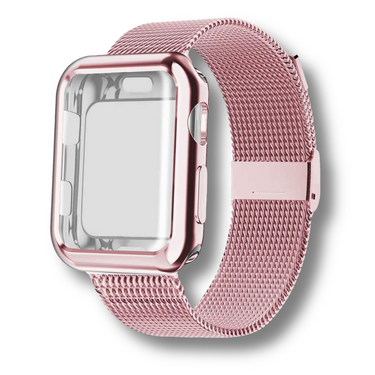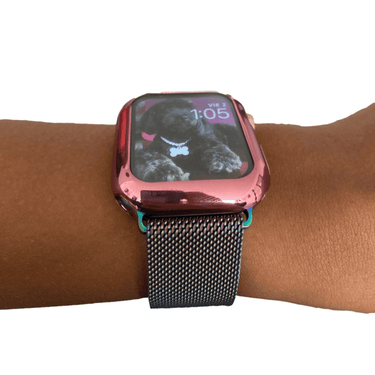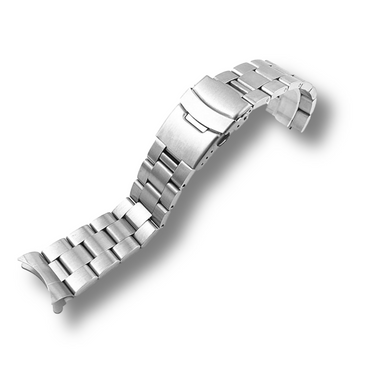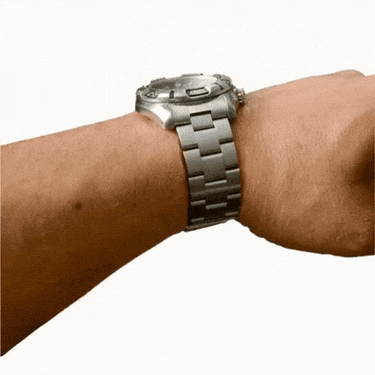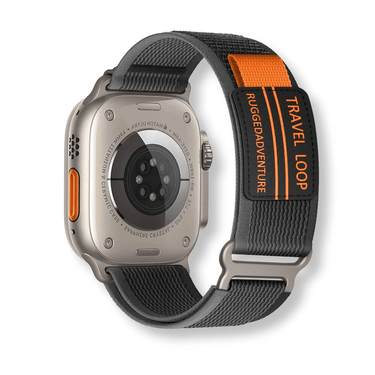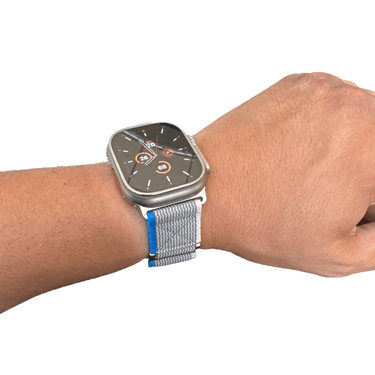Introduction
In our rapidly evolving world, the importance of making eco-friendly choices in consumer products is becoming increasingly evident. As we witness the consequences of climate change and environmental degradation, it has become crucial for individuals and companies alike to shift towards sustainable alternatives.
One such example can be found in the realm of Apple Watch Ultra Bands—a product that marries style, functionality, and a commitment to using sustainable materials. Apple Watch Ultra Bands have gained significant attention for their sleek design, comfort, and compatibility with various Apple Watch models.
However, what truly sets them apart is their emphasis on sustainability. These bands are crafted using materials that prioritize environmental preservation without compromising on quality or aesthetics.
A Brief Overview of the Growing Importance of Eco-Friendly Choices
The global movement towards eco-friendly choices has gained remarkable momentum in recent years. With greater awareness about climate change and its potential impacts on our planet's future, consumers are now seeking products that minimize harm to the environment and promote sustainability. This growing consciousness can be attributed to several factors.
Firstly, there is a heightened understanding of how human activities contribute to pollution, deforestation, and resource depletion. People are increasingly realizing that individual actions can collectively make a significant difference in preserving nature's delicate balance.
Secondly, advancements in technology have made information more accessible than ever before. Through social media platforms, documentaries, and news articles, consumers are exposed to a wealth of knowledge about environmental issues worldwide.
This accessibility has empowered individuals with knowledge they can translate into informed purchasing decisions. But certainly not least important is the increasing emphasis placed by governments and organizations on corporate social responsibility (CSR).
Companies are being held accountable for their impact on the environment and society at large. As consumers demand transparency regarding a company's sustainability practices—from supply chain management to waste reduction—more companies are recognizing that embracing eco-friendly choices isn't just morally right but also good for business.
Introduction to Apple Watch Ultra Bands
Now, let's dive into the world of Apple Watch Ultra Bands and understand how they contribute to the eco-friendly revolution. These bands are specifically designed to complement the sleekness of the Apple Watch, enhancing both style and functionality. However, what truly sets them apart is their dedication to sustainability.
Apple Watch Ultra Bands utilize a diverse range of sustainable materials that minimize environmental impact during production and usage. By carefully selecting materials that are renewable, biodegradable, or made from recycled sources, Apple has taken a significant step toward reducing its ecological footprint.
In addition to being sustainable, these bands offer unparalleled comfort and durability. They have been meticulously engineered to fit snugly on your wrist while allowing breathability—a crucial factor for those who wear their Apple Watches throughout the day.
As we delve further into this article, we will explore various sustainable materials utilized in Apple Watch Ultra Bands. From organic cotton and recycled polyester to innovative alternatives like mushroom leather and algae-based materials, we will uncover the exciting world of eco-conscious choices that make these bands not only stylish but also responsible choices for our planet's well-being.
Understanding Sustainable Materials
Definition and Characteristics of Sustainable Materials
Sustainable materials, when it comes to consumer products such as apple watch ultra bands, refer to those that are produced using methods and resources that minimize harm to the environment. These materials are obtained from renewable sources or recycled materials, reducing the depletion of natural resources and minimizing waste.
Additionally, sustainable materials are often designed to have a lower carbon footprint throughout their lifecycle. One key characteristic of sustainable materials is their ability to be recycled or biodegraded at the end of their life cycle.
This ensures that they do not contribute to landfill waste or pollution in our precious ecosystems. Furthermore, sustainable materials are typically produced using processes that consume less energy and emit fewer greenhouse gases compared to traditional manufacturing methods.
Importance of Using Sustainable Materials in Consumer Products
The usage of sustainable materials in consumer products, like apple watch ultra bands, is becoming increasingly important for several reasons. Firstly, it helps reduce our reliance on non-renewable resources such as fossil fuels and minerals. By opting for sustainable alternatives, we can preserve these scarce resources for future generations.
Secondly, adopting sustainable practices addresses the issue of waste management. By utilizing recycled or biodegradable materials in production processes, we can minimize the amount of waste generated while ensuring a more efficient use of available resources.
Incorporating sustainable materials into consumer products promotes responsible manufacturing practices. It encourages companies to adopt greener technologies and implement ethical sourcing strategies—ultimately leading to a more environmentally conscious marketplace.
Benefits of Sustainable Materials for the Environment
The usage of sustainable materials offers numerous environmental benefits. By choosing these materials for apple watch ultra bands 49mm or any other product components, we contribute towards reducing greenhouse gas emissions associated with traditional manufacturing processes. Consequently, this helps mitigate climate change impacts such as global warming and extreme weather events.
Additionally, sustainable materials require fewer resources to produce, reducing the overall ecological footprint of the product. By minimizing resource extraction and land degradation, we can conserve natural habitats and safeguard biodiversity.
Furthermore, sustainable materials encourage circular economy practices. By designing products with materials that can be easily recycled or biodegraded at the end of their useful life, we can create a closed-loop system where waste is minimized and valuable resources are kept in circulation.
Benefits of Sustainable Materials for Human Health
The benefits of using sustainable materials extend beyond environmental considerations; they also have positive implications for human health. Traditional manufacturing processes often involve the use of harmful chemicals and pollutants that can pose risks to both workers and consumers. However, by utilizing sustainable materials in apple watch ultra bands or any other product, we reduce exposure to such toxins, thus promoting safer working conditions.
Moreover, some sustainable materials are hypoallergenic and skin-friendly. This means that individuals with sensitive skin or allergies can enjoy wearing the product without experiencing irritation or adverse reactions—an important aspect when it comes to items like apple ultra watch bands that come into direct contact with the skin.
Understanding sustainable materials is crucial in making informed choices as consumers. By opting for eco-friendly options like those used in apple watch ultra bands 49mm or any other products we purchase, we contribute towards a healthier environment while fostering better human health outcomes through responsible manufacturing practices.
Popular Sustainable Materials for Apple Watch Ultra Bands
Organic Cotton: Eco-friendly Cultivation, Biodegradability, and Comfort on the Skin
When it comes to sustainable materials for Apple Watch Ultra Bands, one cannot overlook the virtues of organic cotton. Renowned for its environmental benefits, organic cotton is grown without the use of harmful pesticides or synthetic fertilizers. Instead, farmers rely on natural techniques such as crop rotation and biological pest control.
By avoiding chemical-intensive practices, organic cotton cultivation protects ecosystems and promotes biodiversity. In addition to its eco-friendly cultivation methods, organic cotton offers another advantage – biodegradability.
Once an Apple Watch Ultra Band made from organic cotton reaches the end of its lifespan, it can decompose naturally without leaving behind harmful pollutants or microplastics. But sustainability is not limited to environmental aspects alone; comfort matters too.
Organic cotton fibers are soft and breathable, making them gentle on the skin even during prolonged wear. By choosing an apple watch ultra band made from organic cotton, you can enjoy both style and peace of mind knowing that you have made a conscious eco-friendly choice.
Recycled Polyester: Post-Consumer Plastic Bottles Transform into Durable and Versatile Bands
Recycled polyester is a sustainable material that has gained popularity due to its innovative use of post-consumer plastic bottles. These bottles are collected, cleaned thoroughly, melted down into pellets, and then transformed into polyester fibers.
By giving new life to discarded plastic waste through this process, recycled polyester helps reduce landfill waste and curb harmful carbon emissions associated with traditional polyester production. Apple Watch Ultra Bands made from recycled polyester offer remarkable durability that can withstand everyday wear and tear without compromising quality or appearance.
They are also highly versatile since recycled polyester fibers can be blended with other materials like elastane or nylon to enhance flexibility or strength. Not only does choosing a recycled polyester apple watch ultra band contribute to a circular economy and waste reduction, but it also allows you to express your personal style while making an eco-conscious statement.
Cork: Renewable Nature, Water Resistance, and Unique Aesthetic Appeal
Derived from the bark of cork oak trees, cork is a sustainable material that captures attention with its distinctive qualities. Harvesting cork does not harm the trees; instead, the removal of bark promotes their growth and ensures they continue absorbing carbon dioxide from the atmosphere. This renewable characteristic makes cork an ideal choice for eco-conscious consumers seeking sustainability in their Apple Watch Ultra Bands.
Beyond its environmental benefits, cork possesses natural water resistance properties due to suberin, a waxy substance found in its cell walls. This means that your Apple Watch Ultra Band made from cork can withstand exposure to sweat or splashes of water without losing its integrity.
In addition to being functional and sustainable, cork also offers a unique aesthetic appeal. Its textures, patterns, and warm earthy tones create an eye-catching accessory that distinguishes your Apple Watch while making a positive impact on the environment.
Piñatex (Pineapple Leather): Innovative Production Process Using Pineapple Waste Fibers
Piñatex, also known as pineapple leather, is an exciting sustainable material for Apple Watch Ultra Bands that demonstrates creativity in transforming agricultural waste into a valuable resource. Piñatex utilizes fibers extracted from pineapple leaves discarded by farmers after harvesting fruit. By repurposing this waste into a biodegradable leather alternative through an innovative production process, Piñatex reduces environmental impact while offering unique style options for discerning consumers.
The creation of Piñatex involves mechanical extraction of fibers from pineapple leaves followed by an industrial process that converts them into non-woven textile sheets. These sheets are then used as the base material for various products like Apple Watch Ultra Bands.
The result is a cruelty-free, eco-friendly alternative to traditional leather that still possesses the visual appeal and durability associated with animal-based leather. By opting for an apple watch ultra band made from Piñatex, you support sustainable agriculture practices, reduce waste, and contribute to the development of innovative material solutions that prioritize both style and the planet.
Mushroom Leather: Uncovering the Fascinating World of Mycelium-Based Leather Alternatives
Detailing the Creation Process and Unique Qualities
When it comes to sustainable materials for Apple Watch Ultra Bands, one intriguing option that has gained attention is mushroom leather. This innovative material is derived from mushroom roots, known as mycelium, combined with agricultural waste. The process begins by cultivating mycelium in a controlled environment, allowing it to grow and form a solid structure.
Agricultural waste, such as corn husks or sawdust, provides the necessary nutrients for mycelium growth. The resulting material is then dried and treated to enhance durability before it is transformed into Apple Watch Ultra Bands.
What makes mushroom leather even more remarkable is its biodegradability. When discarded, it decomposes naturally without causing harm to the environment.
This feature sets it apart from traditional animal leather, which not only contributes to deforestation but also takes years to decompose. Moreover, mushroom leather offers impressive durability comparable to animal leather while being completely cruelty-free.
It can withstand daily wear and tear without losing its shape or integrity. Its unique texture adds an earthy aesthetic appeal that sets it apart from other materials commonly used in watch bands.
The Rise of Algae-Based Materials: A Renewable Resource with Promising Potential
Another lesser-known sustainable material making waves in the world of Apple Watch Ultra Bands is algae-based materials. Algae have long been recognized for their ability to convert sunlight into energy through photosynthesis, but recent advancements have unveiled their potential as a renewable resource for various applications. In terms of creating watch bands, algae undergoes a transformation process where it is processed and transformed into bio-based polymers suitable for manufacturing purposes.
These polymers provide excellent flexibility and strength necessary for Apple Watch Ultra Bands while maintaining their eco-friendly properties. Furthermore, the cultivation of algae for material production offers numerous potential benefits.
Algae are known to absorb carbon dioxide during their growth, thus contributing to carbon sequestration and helping mitigate climate change. Additionally, algae require minimal resources such as water and land, making them an efficient and sustainable alternative to other resource-intensive materials.
By incorporating algae-based materials into Apple Watch Ultra Bands, not only do we reduce our reliance on non-renewable resources but also support the growth of a more environmentally friendly industry. Mushroom leather and algae-based materials represent exciting possibilities for creating sustainable Apple Watch Ultra Bands.
These lesser-known alternatives offer unique qualities that can meet both aesthetic and environmental demands. Mushroom leather's use of mycelium and agricultural waste showcases its potential as a cruelty-free alternative with impressive durability.
On the other hand, algae-based materials boast their renewable nature while actively contributing to carbon sequestration. As we strive towards a more eco-friendly future, exploring these innovative options should be at the forefront of our consumer choices when it comes to technology accessories like Apple Watch Ultra Bands.
Innovations in Sustainable Material Technologies
Biofabrication: Cultivating a Sustainable Future
In the quest for sustainable materials, scientists have turned to biofabrication, an exciting field that combines biology and technology to grow materials in laboratories. Imagine a world where spider silk can be produced without harming any spiders or where collagen for medical purposes can be grown without the need for animal testing. These are the possibilities offered by biofabrication.
One remarkable example of biofabrication is lab-grown spider silk. Spider silk is known for its exceptional strength and stretchiness but harvesting it from spiders is a complex process that cannot meet the demands of mass production.
By extracting the necessary genes responsible for producing spider silk and inserting them into other organisms like bacteria or yeast, scientists can now produce large quantities of this remarkable material sustainably. Another promising avenue in sustainable material technologies is lab-grown collagen.
Collagen, a protein found abundantly in our bodies, has various applications ranging from wound healing to tissue engineering. Traditionally sourced from animals like cows or pigs, lab-grown collagen eliminates ethical concerns while ensuring a controlled and pure product.
With advancements in tissue engineering techniques, we are rapidly approaching a future where lab-grown collagen will revolutionize medical treatments. The possibilities presented by biofabrication extend far beyond spider silk and collagen.
Researchers are exploring ways to grow leather-like materials using cellular agriculture techniques instead of relying on animal hides. By cultivating cells that produce specific proteins found in animal skin, they can create cruelty-free alternatives that mimic the look and feel of traditional leather without harming any animals.
Conclusion
The world is moving towards eco-friendly choices at an accelerating pace, and Apple has taken note with their commitment to sustainability reflected in their products like the Apple Watch Ultra Bands. By harnessing sustainable materials, such as organic cotton, recycled polyester, cork, pineapple leather, and even innovative biofabricated materials like lab-grown spider silk or collagen, we can make a positive impact on the environment without compromising style or quality.
Embracing these sustainable alternatives not only reduces our reliance on non-renewable resources but also minimizes environmental pollution caused by traditional manufacturing processes. As we witness continuous advancements in sustainable material technologies, there is a bright future ahead where innovations will enable us to make conscious choices that benefit both our planet and ourselves.












